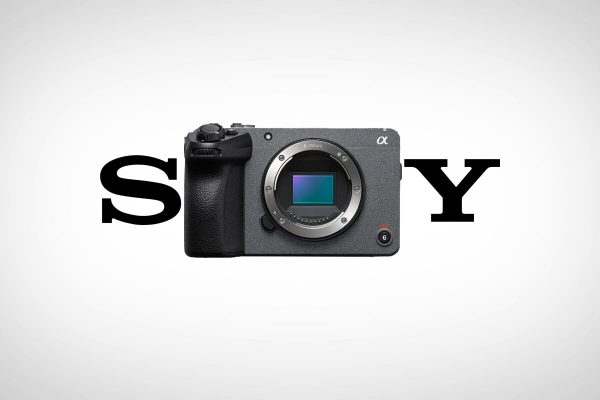With the (probable) release of a 2014 iMac from Apple and their newly designed MacPro, many in the industry are left scratching their heads regarding where they should place their money. The iMac is sleek and a workhorse in its current state, although the new MacPro is a giant in its field. However, will the MacPro’s cylindrical design make updating the machine an expensive decision? Particularly, when the price difference means you could update your entire desktop with an iMac for the cost of just a graphics card and memory for the MacPro.
Larry Jordan (filmmaker and Adobe trainer extraordinaire) recently purchased a new iMac and was very impressed with the way it handled everything he threw at it. His initial impressions were:
“This thing is fast! It loads fast. It runs smoothly. It renders quickly. Export is faster than real-time”. He then went on to say “This proves a point I’ve been making in my classes and webinars recently: virtually every Mac shipping today is fast enough to edit video; even 2K or 4K images. The real test is the graphics processing unit (GPU) and the speed of your storage system”.
His final word on the system was: “Frankly, this 27″ iMac blows the doors off my MacPro. It edits single camera projects easily. Its ability to edit multicam projects is limited only by the speed of your storage – with the caveat that optimizing media into ProRes is strongly encouraged. If you are looking for a system that can handle whatever video format you throw at it, I am VERY impressed with this new iMac”.
It’s interesting to note that someone who works primarily with Adobe and Final Cut Pro X has so many good things to say about the iMac.
Larry’s speed test for the iMac (with Fusion Drive) looked like this:

Using the Blackmagic Design Disk Speed Test to measure the speed of the Fusion drive: 323.1 MB writing, and 411.3 reading (pic from Larry Jordan)
Larry later wrote his impressions on the new MacPro too (which you can read here) “From the moment I pulled the system out of the box, I felt I was looking at an incredible Swiss watch – the fusion of art with technology. It is surprisingly heavy, with a solid feeling of substance”. So he liked the looks but under the hood Larry went on to talk not only about speed but how whisper quiet the tower was when running: “12 dB of total noise. 17 dB of total noise when under a load. My son, who’s ears are a WHOLE lot better than mine, could not hear the Mac Pro because the ambient noise in a very quiet office was louder than the computer”.
The disk write speed was incredibly fast within the internal flash storage, with Larry logging almost three times the speed of the iMac:
“Here’s the speed of the Mac Pro talking directly with its internal flash drive. Holy smokes! I have never measured speeds this fast — BUT, even this speed does not fully load a single Thunderbolt 1 pipe. The new Thunderbolt 2 protocol, which the Mac Pro also supports, is more than twice as fast as the internal flash drive”.
It must be noted that it’s rare that you’ll be using your SSD for storage. The drives are usually small in size and (depending on the film you’re working on) it’s likely that some of the time you will be rendering to an internal Sata drive or Thunderbolt RAID drive.
It should also be noted (to get an idea of the speed/render ratio) that when rendering a ProRes 422 HQ in 1080p media file, the required data write speed (or bandwidth) is about 18 MB/second. When reading (opening/using apps, watching movies, browsing the net, etc.) you can expect little to no buffering or lagging, writing (importing, rendering, saving) is surprisingly even faster than reading using the SSD on the MacPro.
Although the disk speed appears modest (when compared to the SSD drive) it is still incredibly fast as recorded when testing a connected 2-Drive Thunderbolt RAID:

The disk speed of a 2-drive Thunderbolt RAID connected directly to the Mac Pro (pic by Larry Jordan).
Another recent reviewer of Apple’s new MacPro are the creatives from FCP.co, who described the new design as “a bit like Arnie trying to find the Predator in the jungle”.
Using the MacPro, Chris Roberts (editor and trainer) edited 3K and 4K footage with Final Cut Pro X 10.1. His thoughts were:
“I can quite honestly say that, despite working with these huge file sizes and frame sizes, the editing experience has been silky smooth. Skimming, playback, shuttling, jogging and trimming are all responsive. In fact, editing 4K on the Mac Pro feels like editing HD on my current MacBook Pro – except I can see large numbers for the frame sizes where normally I’d expect to see the reassuringly familiar “1920×1080”…I kept having to remind myself I wasn’t working in good old HD anymore. Under the “Best Performance” settings I was able to cut the footage with ease and trim with abandon without any lag or delay from the system getting in the way”.
Chris decided he’d throw everything he could at the new beast by opening up a RED RAW 4K clip and adding effect after effect onto the clip, seeing what it could take. Here are the results from that experiment:
In the end it comes down to affordability vs performance.
If you have the money to purchase the more expensive machine or need the increased speed then your choice is made. Another thing to also consider is the life of both machines, as Chris Potter recently stated:
“One thing that can complicate the analysis is the projected lifespan of the equipment. It seems that there are a number of facilities still using Mac Pros that are 5+ years old, but you would probably be hard pressed to say the same thing about iMacs”.
However, if you still can’t decide between the two then Larry Jordan’s final points may help the deciding factor:
- “If money is tight, a well-outfitted iMac will edit standard-def and HD video easily – provided you have good, high-speed storage attached to the system”
- “If you are doing video compression, the hardware acceleration in the iMac beats the software compression in the Mac Pro. However, hardware acceleration does not yield the highest image quality, nor the smallest file sizes. If image quality and file size is more important, the speed of the Mac Pro easily beats that of a fully-loaded iMac”.
- If you are editing multicam projects, 4K or larger frame sizes, RAW files, or want to position yourself for the future, the Mac Pro is the system to get.
You can purchase either machine now at Apple.com.








